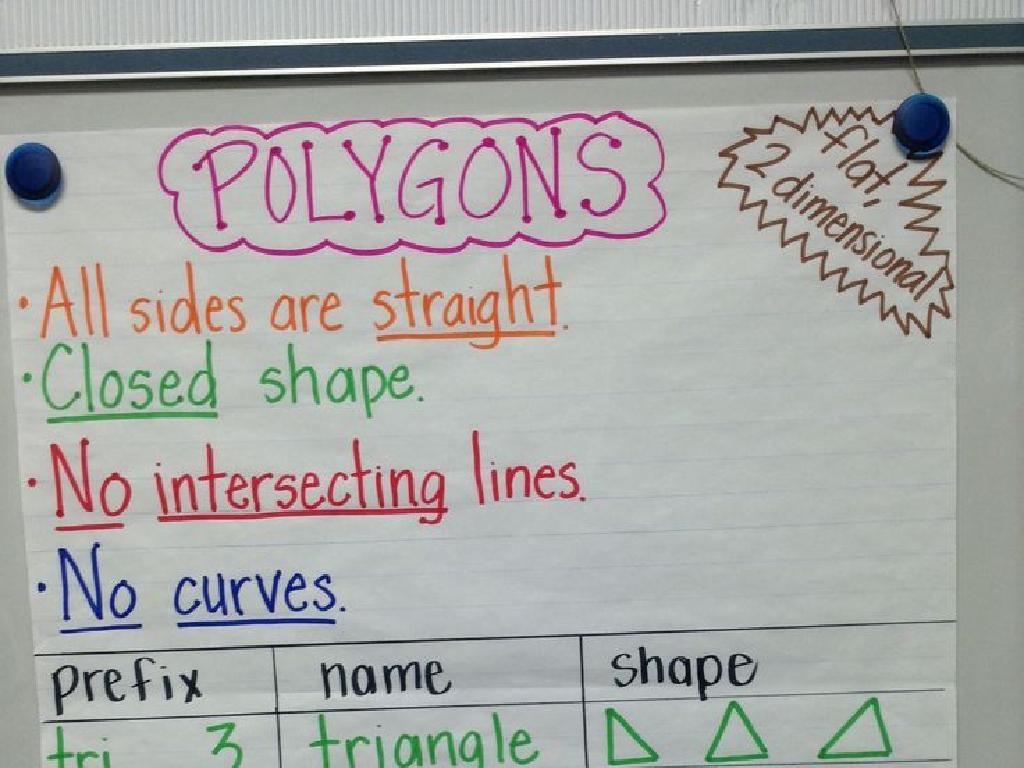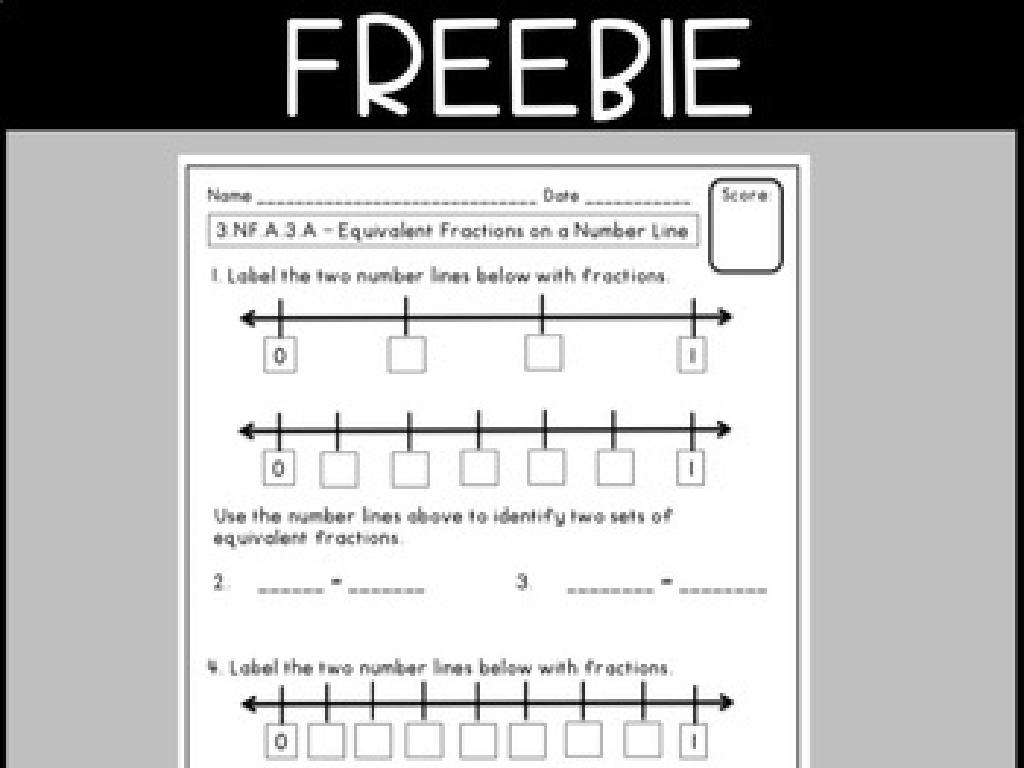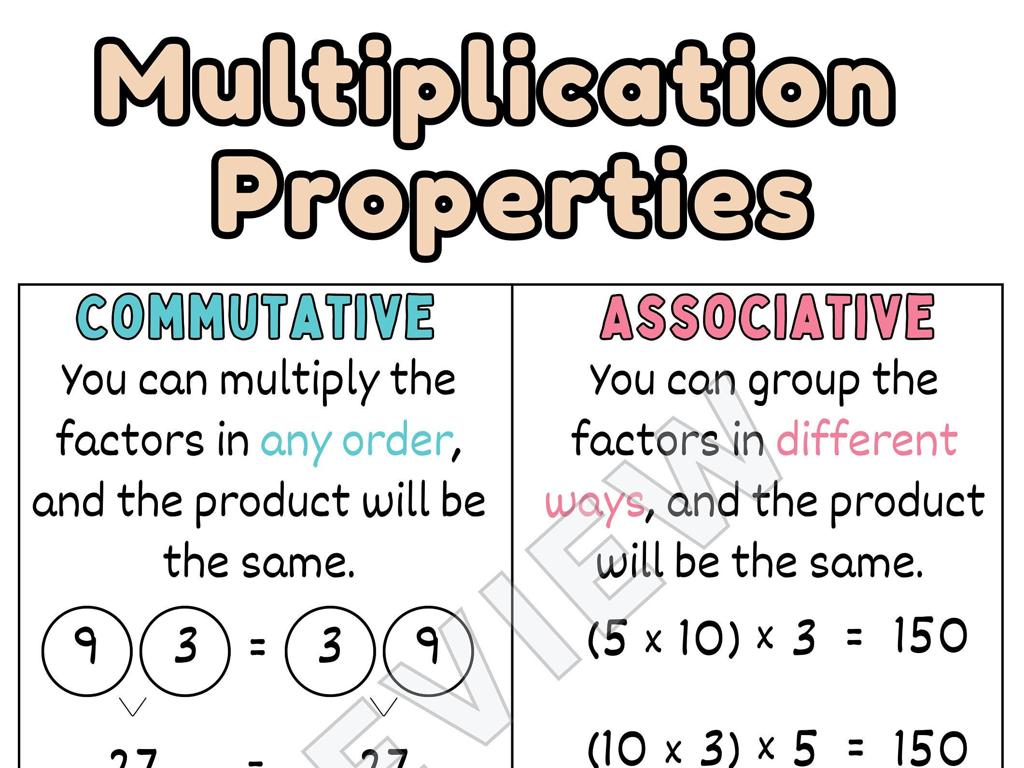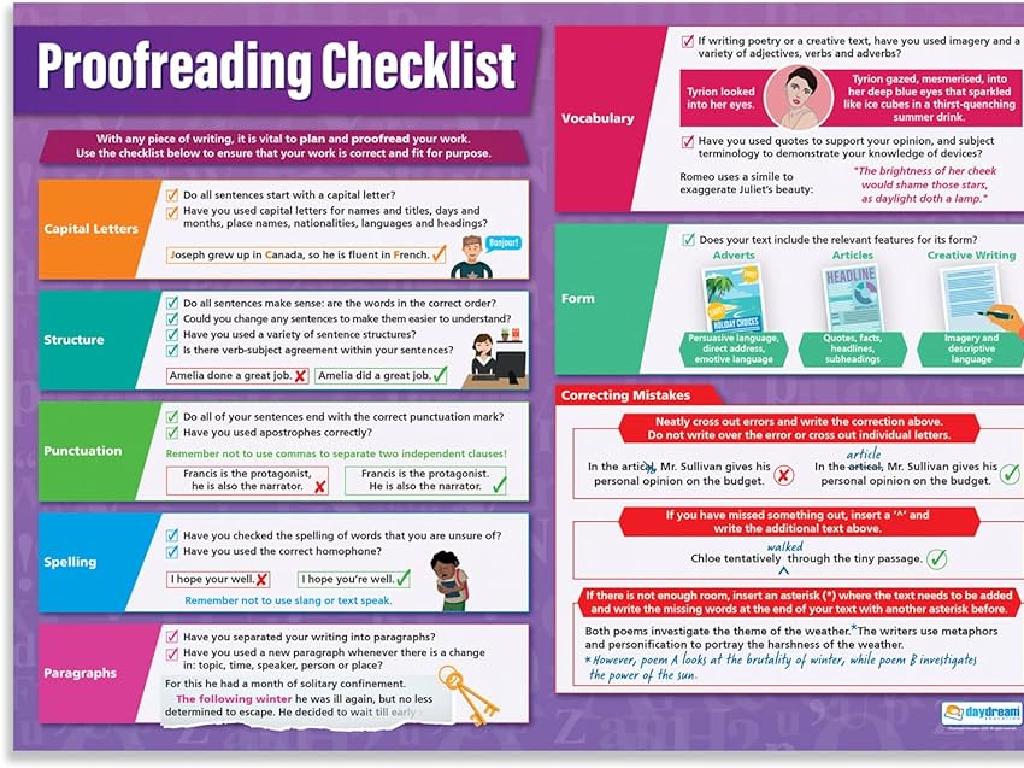Evaluate One-Variable Expressions
Subject: Math
Grade: Eighth grade
Topic: Expressions
Please LOG IN to download the presentation. Access is available to registered users only.
View More Content
Evaluating One-Variable Expressions
– Understanding mathematical expressions
– Expressions combine numbers, variables, and operations
– Defining one-variable expressions
– An expression with only one variable, e.g., 2x + 3
– Examples of one-variable expressions
– For x=2, 2x + 3 becomes 2(2) + 3 = 7
– Practice evaluating expressions
– Solve sample problems to reinforce the concept
|
This slide introduces the concept of one-variable expressions in mathematics. Begin by explaining what expressions are: combinations of numbers, variables, and operations without an equality sign. Then, define a one-variable expression as an expression that contains only one variable. Provide examples, such as 2x + 3, and demonstrate how to evaluate the expression for a given value of the variable. Encourage students to practice with additional examples to solidify their understanding. The goal is for students to become comfortable with evaluating expressions that contain a single variable.
Parts of an Expression
– Identify terms, coefficients, variables
– Terms are parts separated by + or -, coefficients are numbers multiplying variables, and constants stand alone
– Understanding expression structure
– Break down: 3x + 4
– In 3x + 4, ‘3x’ is a term with 3 as the coefficient and x as the variable, ‘4’ is a constant
– Practice with different expressions
– Apply knowledge to evaluate expressions like 5y – 2, 7a + 3b
|
This slide introduces students to the fundamental components of algebraic expressions. Start by defining terms, coefficients, variables, and constants. Explain how these elements combine to form expressions. Use the expression 3x + 4 as a concrete example to illustrate these concepts. ‘3x’ is a term where ‘3’ is the coefficient (the number multiplying the variable) and ‘x’ is the variable. The number ‘4’ is a constant because it stands alone without a variable. After explaining, engage students with practice expressions to apply their understanding, reinforcing the lesson with hands-on experience. This will prepare them for more complex algebraic operations involving one-variable expressions.
Evaluating One-Variable Expressions
– Understanding evaluation
– To evaluate an expression means to find its value given the variable’s value.
– Substitution of variables
– Replace the variable with the given number to simplify the expression.
– Following PEMDAS
– Apply the order of operations: Parentheses, Exponents, Multiplication and Division, Addition and Subtraction.
– Practice with examples
– Let’s evaluate 3x + 2 when x=4. Following PEMDAS, we calculate 3(4) + 2 to get 14.
|
This slide introduces the concept of evaluating one-variable expressions, which is a fundamental skill in algebra. Start by explaining what it means to evaluate an expression, emphasizing that it involves finding the numerical value of the expression when the variable is replaced by a specific number. Highlight the importance of substituting the variable correctly and then applying the order of operations, known by the acronym PEMDAS, to solve the expression accurately. Provide several examples for the students to practice, starting with simple substitutions and gradually increasing complexity to include all operations. Encourage students to work through the examples step-by-step and to always follow the order of operations without skipping steps.
Evaluating Expressions with Negative Numbers
– Review operations with negatives
– Recall how to add, subtract, multiply, and divide negatives
– Evaluate expressions with negatives
– Apply knowledge to solve expressions like -5 + 2 or -3 * 4
– Example: Evaluate -2x for x = 3
– If x = 3, then -2x = -2 * 3 = -6
|
Begin with a quick review of how to work with negative numbers, ensuring students remember the rules for addition, subtraction, multiplication, and division. Emphasize that the same rules apply when evaluating expressions that include negative numbers. Work through the example -2x when x = 3 by substituting the value of x into the expression and applying the multiplication rule for negative numbers. Encourage students to solve similar problems and come up with their own examples. This will help solidify their understanding of evaluating expressions with negative numbers.
Evaluating One-Variable Expressions
– Practice with x = 5: 2x + 7
– Substitute x with 5: 2(5) + 7 = 17
– Practice with x = -4: x^2 – 3x
– Substitute x with -4: (-4)^2 – 3(-4) = 16 + 12 = 28
|
This slide is aimed at providing students with practice problems to reinforce their understanding of evaluating one-variable expressions. The first expression is a linear one, where students will substitute x with 5 and perform the arithmetic operations. The second expression involves a negative value for x and requires students to apply the order of operations, including squaring the negative value and multiplying before adding. Encourage students to work through these problems step by step and to check their work. These examples will help solidify their comprehension of substituting values into expressions and carrying out the necessary calculations to evaluate them.
Common Mistakes in Evaluating Expressions
– Remember order of operations
– Use PEMDAS to avoid errors
– Keep track of negative signs
– Negative times a negative equals a positive
– Example: 3 – 2x for x = -1
– Common error: 3 – 2(-1) should be 3 + 2, not 3 – 2
|
This slide addresses frequent errors students make when evaluating one-variable expressions. Emphasize the importance of the order of operations, often remembered by the acronym PEMDAS (Parentheses, Exponents, Multiplication and Division, Addition and Subtraction). Stress that operations should be performed in this specific order to avoid mistakes. Additionally, highlight the common confusion when dealing with negative numbers, especially when multiplying or dividing. Provide the example of 3 – 2x when x = -1, where students might forget to change the sign when substituting the negative value of x, leading to an incorrect answer. The correct evaluation should be 3 + 2, not 3 – 2. Encourage students to double-check their work for these common errors.
Class Activity: Expression Evaluation Race
– Pair up and solve expressions
– Each pair gets unique expressions
– Evaluate expressions for given values
– Use substitution to find the value of expressions
– First to finish correctly wins!
|
This activity is designed to encourage collaboration and friendly competition among students while practicing the evaluation of one-variable expressions. Before starting, ensure each pair understands the concept of substituting a given value into an expression. Provide a diverse set of expressions to each pair, ensuring they are of appropriate difficulty for eighth-grade students. Monitor the class as they work through the problems, offering guidance as needed. Possible expressions could include linear expressions, use of exponents, and incorporating basic algebraic operations. Celebrate the winners and review the solutions with the entire class to reinforce learning.





